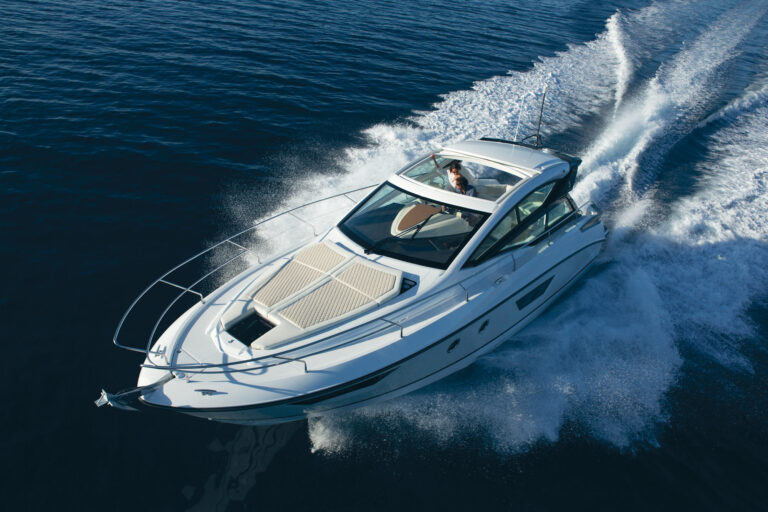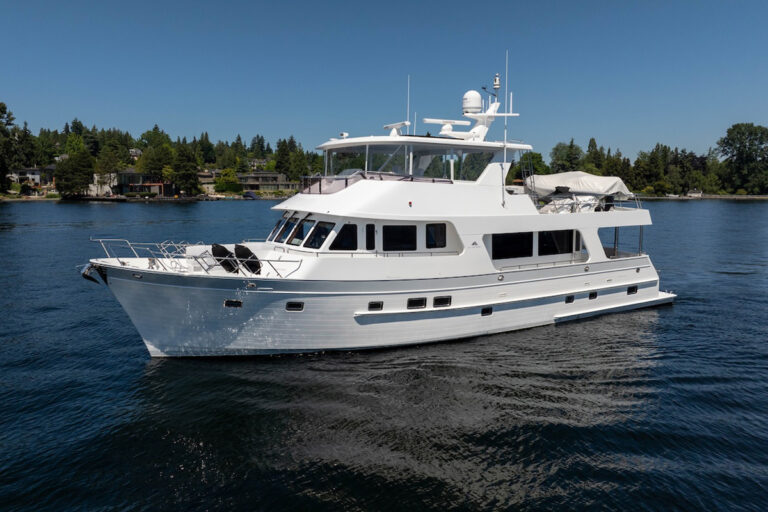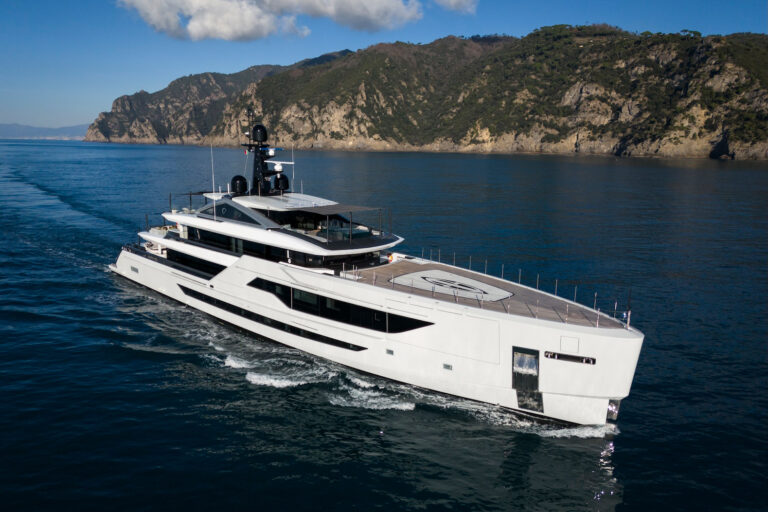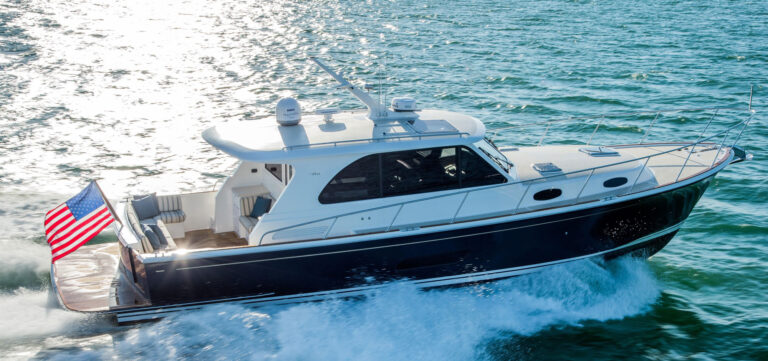The Si-Tex Radar PC combines a radar sensor and a GPS with a personal computer to create a versatile electronic navigation system. In its expanded form, it includes the Nobeltec Visual Mariner navigation suite and a Tides and Currents for Windows program. Even captains aboard yachts capable of carrying larger monitors will appreciate this smaller unit’s information integration. The system can be a valuable addition, even aboard vessels with a more capable radar system.
A small radome houses the radar sensor, transmitter, receiver, antenna and data processing circuits, and all control functions are via software-controlled menus. Although the software is designed for Windows, it operates perfectly on a Macintosh with the Virtual PC program. Most of today’s PCs, including laptops, can handle the data processing workload without difficulty. Your biggest challenge may be choosing a viewing screen suitable for use in all the lighting conditions you’ll likely encounter. Aboard a larger motoryacht, a 15-inch diagonal color LCD or a 20-inch or larger CRT will make the most of the system’s capabilities.
The default radar display of this menu-driven system is a conventional PPI screen. A vertical area on the screen’s right side, identified as the display console, shows the following navigation data, including vessel identity (from information in memory): lat/lon from a GPS or DGPS, and the usual SOG, COG, VMG, TTG, XTE, ETA, RNG and BRG data. The coordinates of the cursor (controlled by a mouse) appear at the bottom.
A two-row toolbar on the display’s top controls radar transmit/standby, range, STC, gain, IR, trails, FTC and target expansion. Although it’s straightforward and well implemented, some adjustments are more time-consuming than they would be if controlled by a conventional knob or push-button. For example, adjusting range requires you to access the appropriate menu, select the new range, then close the dialog box. Feedback is excellent, with display of the current setting and the alteration you wish to make.
The system works well after you complete the learning period, but some compromise is unavoidable, compared with a conventional radar. The designers recognized this and added one-click selection for three commonly used range scales: 1/8, 1/4 and one mile. You select the variable range marker (VRM) ring, electronic bearing line (EBL), guard zone and range ring functions with a single click on the toolbar. Then, you adjust the VRM, EBL and guard zone on-screen by pointing and dragging. One useful attribute of the PC interface is the ability to store set-up parameters for each radar range. Radar data may also be recorded for playback, a valuable aid when interpreting on-screen information.
As might be expected, a substantial amount of clicking, pointing and dragging is required. Although a conventional computer mouse will work, a track ball is better on a moving vessel. The radar sensor should perform as well as all similar small radars on the market. As with other small radars, the antenna’s limited length results in a wide horizontal beam width, somewhat limiting the unit’s ability to separate closely located targets. The 2kW peak pulse power transmitter, coupled with a sensitive receiver, is sufficient for most-often used ranges. The antenna rotates at 30 revolutions per second, rather than the more common 24 rps. The higher rate can improve tracking of close-in high-speed targets, and can aid performance when the system is installed on high-speed boats.
The system’s full value becomes apparent when the Nobeltec Vis-ual Navigation Suite is active. The suite displays raster-scan and vector cartography, and can present photographic images. The Passport vector charts in the Nobeltec system are derived from the Transas charts widely used in the commercial Electronic Charting Dis-play and Infor-mation System. A CD-ROM contains chart data for the entire world. The charts provide immediate on-screen identification of navigation aids, whereas many vector chart systems require a number of keystrokes to access such data. If a navigation mark or other chart feature is not fully identified, positioning the cursor on the object will bring up a dialog box containing more information. Many other vector chart systems require multiple actions to achieve this, too. The Passport charts’ appearance closely matches that of raster-scanned charts. Jeppesen’s recent purchase of Nobeltec bodes well for even further enhancement of the company’s Visual Navigation Suite.
This system’s most valuable feature is the ability to overlay the radar screen on the chart. In the basic display mode, the screen is split vertically. The chart occupies half the screen, and a chart control toolbar appears at the top. The display console data window remains visible at the right of the screen unless you temporarily delete it, making the entire screen area available for pictorial radar and chart information. Use of the radar overlay mode requires careful attention to the relative alignment of the chart and the radar’s lubber line. You may also have to adjust the transmission trigger setting when you enter this mode. Your satisfaction with the radar overlay mode will largely depend on the accuracy and stability of the heading information the remote sensor supplies.
Display options include tiling (showing one page of data behind another) and scanning rapidly for information. Dragging any window’s boundary with the mouse or track ball will alter the relative size of the radar and chart windows.
Installation is unusually easy. The radome is small, slightly more than a foot in diameter and 8 inches high. It weighs 10 lb. The cable that connects the scanner to the remainder of the system is unusually small in diameter and quite flexible. The cable is a benefit of processing all radar information within the radome, with data transfer to and from the associated PC via an RS 422 digital data bus. The cable from the radome connects to a small interface box that connects to the computer. Several types of interface are available: USB, a plug and play interface found on many new computers; PCI/ISA hardware cards used with desktop and docking station laptop computers; and PCMCIA cards that plug into laptops. Our test unit used the USB interface, which is housed in a small plastic box. The interface box control switches need only be set once, making the box practical to hide after the system is checked out. You may not need an interface box with a Macintosh computer, as all Macintosh serial ports are RS 422 communication ports.
Viewed as a basic radar, the Radar PC may seem to merely substitute a PC and its monitor for a dedicated radar and its familiar operating environment. Remember, though, that few PC screens are bright enough or sufficiently weather-resistant for use in exposed locations on the boat.
What appear at first to be limits to the Radar PC’s usefulness, compared with a conventional radar, really aren’t. The unit’s relatively low power and ultimate range, though less than many radar units, should not be limiting. Most radar-aided navigation is accomplished on ranges less than four miles, with operation at one-mile range or less prevalent, especially entering and leaving port or negotiating a narrow channel. A larger vessel equipped with higher-powered stand-alone radar may find addition of the Radar PC attractive, especially if the bridge needs an electronic chart navigation system. Suggested retail: $2,695. n
Contact: Si-Tex, (727) 576-5734; www.si-tex.com.









